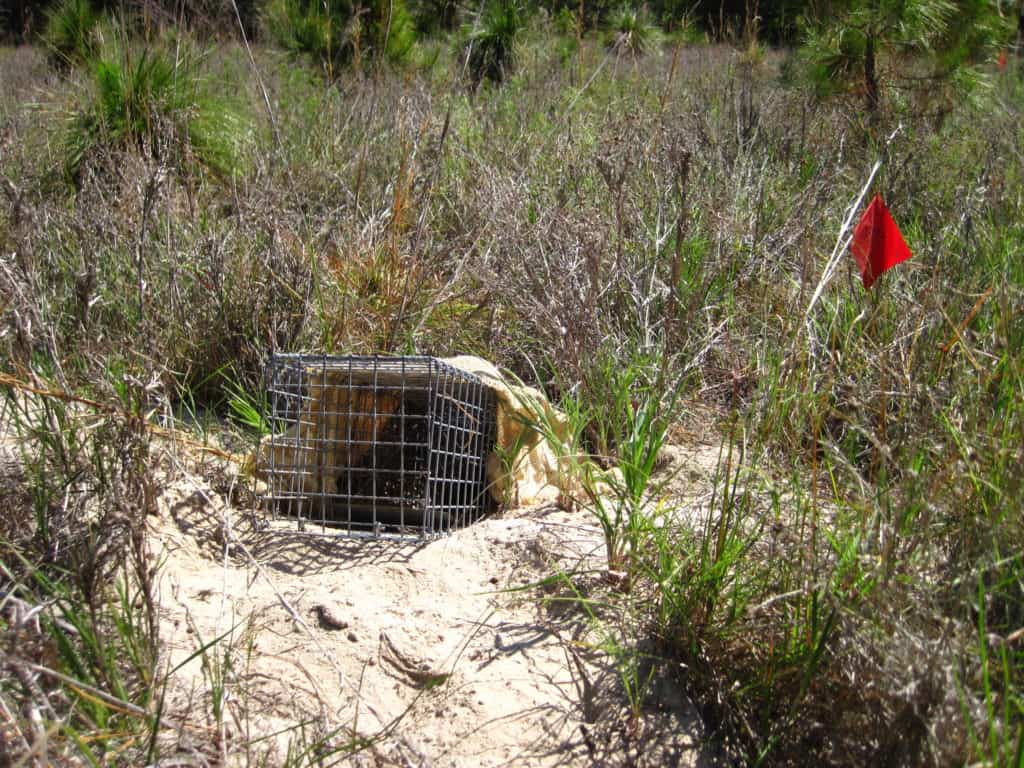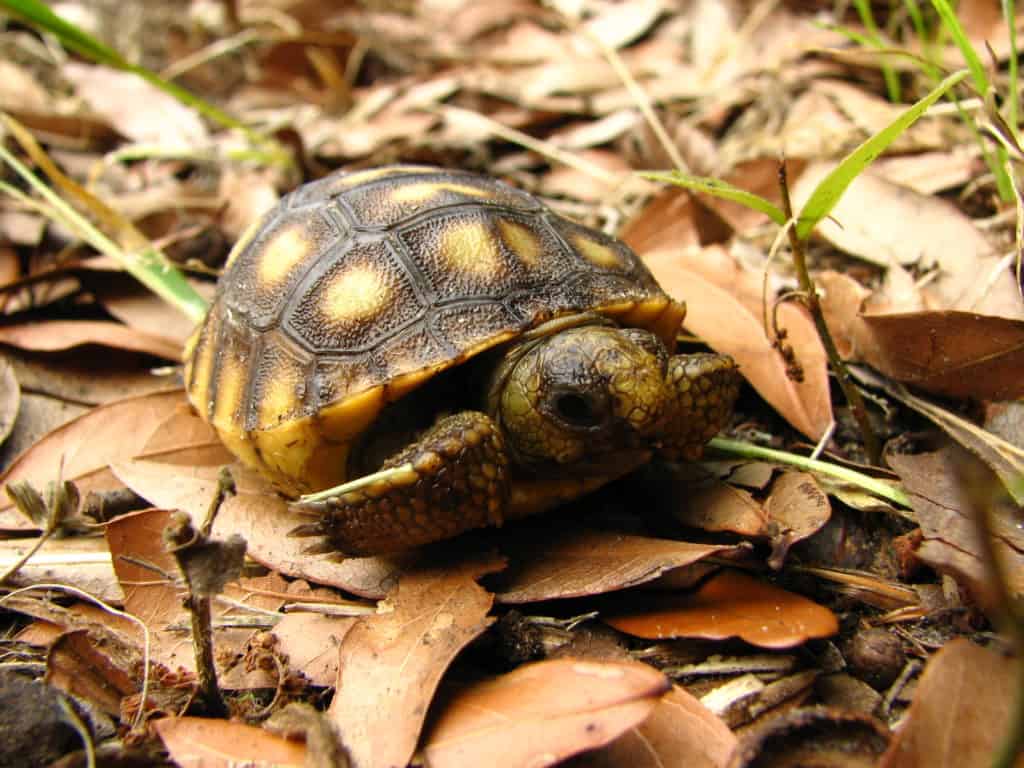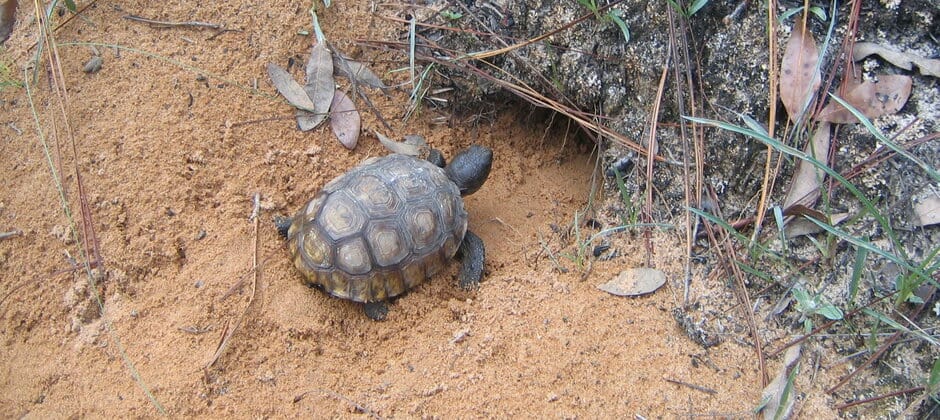Share this article
JWM: Gopher tortoise translocations deemed a “remarkable success”
Translocating gopher tortoises to a barrier island in Georgia has resulted in a “robust and secure” population two decades after major efforts.
“If you do it right, [translocation] can actually be a very effective tool for conservation and for recovery of populations,” said Tracey Tuberville, a senior research scientist at the University of Georgia’s Savannah River Ecology Laboratory and the lead author of a recent study published in the Journal of Wildlife Management. “It has been a remarkable success.”
Managers first moved about 25 to 30 gopher tortoises (Gopherus polyphemus) to St. Catherines Island from uncertain origins from 1987 to 1993. before a formal program was established. A major effort to move roughly 74 animals from around Statesboro, Ga. didn’t occur until 1994. It was the first major translocation project in Georgia, and at the time, it was controversial because many of the animals were moved to the island not to reestablish an extirpated population — St. Catherines, once full of cattle pastures and now owned by a private foundation, had never had a gopher tortoise population — but rather to move the reptiles out of areas slated for development. Georgia also wanted to establish a protected population of tortoises. Since then, about 50 additional tortoises have been moved to the island, totaling about 150 founding animals.

Researchers trapped gopher tortoises for the study by putting cages at the entrance to their burrows.
Credit: Bess Harris
Tuberville had a long-term interest in translocation projects, specifically in determining whether or not they worked. About 20 years after the last major translocation of tortoises to the barrier island, she planned to survey the animals and assess the status of the population there. Since it takes about 10 years for the tortoises to reach sexual maturity, she reasoned that it should be easier to determine whether or not the individuals successfully reproduced and whether these hatchlings survived to mating ages themselves.
“In a long living animal, you really need a long time frame to assess success,” she said.
To determine the state of the population, she and her co-authors tracked turtle survival and assessed the population from 2006 to 2013.
They found only about 37% of gopher tortoise hatchlings survived their first year of life. Survival doubled once the animals reached their juvenile stage. Subadults had nearly the same survival level as adults.
But the translocated tortoises received several different levels of treatment that affected their survival. Some were left alone to hatch in the wild, while others were hatched in the lab and released shortly thereafter. A third group was kept in captivity for the first 6 to 9 months before being released. All of these turtles were given marks so that the researchers could later identify them.

Strong recruitment of baby gopher tortoises show the population is self-sustaining.
Credit: Bess Harris
There was some concern that headstarting the turtles would result in them being less fit for the wild by the time they were released — several months after hatching. But Tuberville said the team found no detrimental effect from holding onto the hatchlings in their most vulnerable period.
Overall, the translocation has been successful, Tuberville said. From a founding population of about 150 tortoises, recent analysis not included in this study shows there are at least 250 adult and juvenile tortoises on the island, she said.
This article features research that was published in a TWS peer-reviewed journal. Individual online access to all TWS journal articles is a benefit of membership. Join TWS now to read the latest in wildlife research.
Header Image: A juvenile gopher tortoise enters its burrow in St. Catherines Island. Credit: Bess Harris








